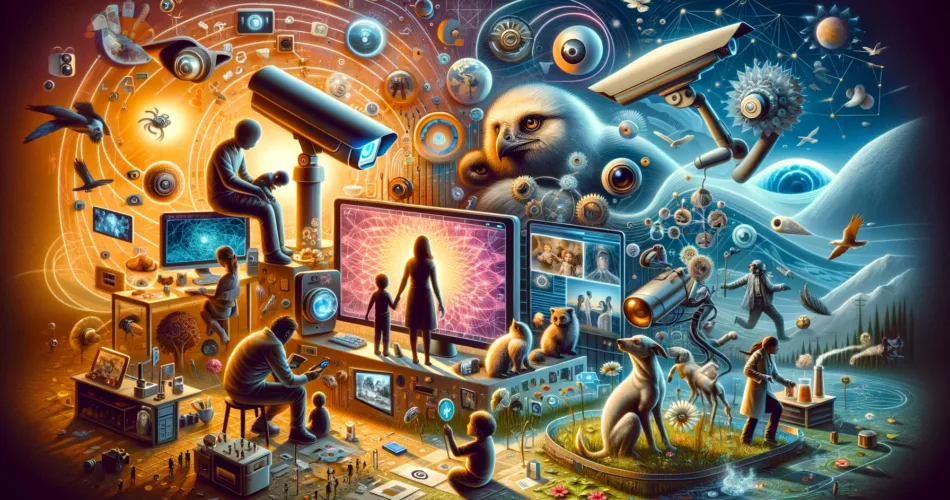In an era where technology and surveillance intertwine in the most intimate facets of our lives, understanding the delicate balance between curiosity, care, and intrusion becomes paramount. This article delves into the multifaceted dynamics of watching – from parental oversight to the expansive reach of artificial intelligence in our social interactions and the scientific observation of animals. By exploring these dimensions, we aim to shed light on the underlying implications of surveillance technologies and their impact on privacy, connection, and our understanding of the world.
The Innocence of Parental Surveillance
The narrative begins with a seemingly innocuous scenario: a parent, Nasser, tucking his two-year-old child into bed. This daily ritual, framed within the context of care and concern, subtly introduces the theme of surveillance. Nasser’s candid reflection on watching his child through a monitor, initially for safety, later morphing into a form of entertainment, encapsulates the dual nature of surveillance – protective yet inherently curious. This personal account sets the stage for a broader exploration of watching, extending beyond the confines of a child’s nursery into the wild and the wired world.
The Science of Watching: Veeries and Predicting Hurricanes
Transitioning from the domestic to the natural world, the story of Chris Heckscher and his study of veeries – small, elusive birds – exemplifies the scientific value of observation. Heckscher’s use of surveillance technology, specifically GPS trackers, reveals not only the migratory patterns of these birds but also their astonishing ability to predict hurricane seasons. This segment highlights how surveillance, when applied with purpose and precision, can unveil remarkable insights into nature’s mysteries, contributing to our understanding of ecological systems and potentially informing disaster preparedness strategies.
Surveillance in Animal Welfare: From Pigs to Privacy
The application of surveillance technology extends into the realm of animal welfare, where researchers like Emma Baxter utilize facial recognition to monitor pigs on farms. This initiative aims to improve living conditions and treatment by identifying individual animals and assessing their well-being through facial expressions. However, this well-intentioned use of surveillance technology raises questions about privacy and the ethical implications of constant monitoring, echoing concerns that resonate in human contexts as well.
The Double-Edged Sword of Digital Surveillance
The exploration of surveillance technologies culminates in the digital domain, where the proliferation of facial recognition software and data collection practices by platforms like Tinder and social media sites underscores the privacy paradox. Users willingly divulge personal information for the benefits of connectivity and convenience, often unaware of the extent to which their data is harvested and utilized. Through the lens of Judith Duportail’s investigation into Tinder’s data collection practices, the article illuminates the trade-offs between personal privacy and the desire for connection in the digital age.
Conclusion: Navigating the Surveillance Landscape
As surveillance technologies become increasingly embedded in our lives, navigating the complex landscape of privacy, connectivity, and observation requires a nuanced understanding of the benefits and drawbacks. From the intimate settings of our homes to the vast expanses of the natural world and the digital universe, the act of watching serves both to protect and to probe, offering insights and raising ethical questions. In this modern surveillance age, finding the balance between safeguarding our privacy and embracing the connections facilitated by technology remains a paramount challenge.

